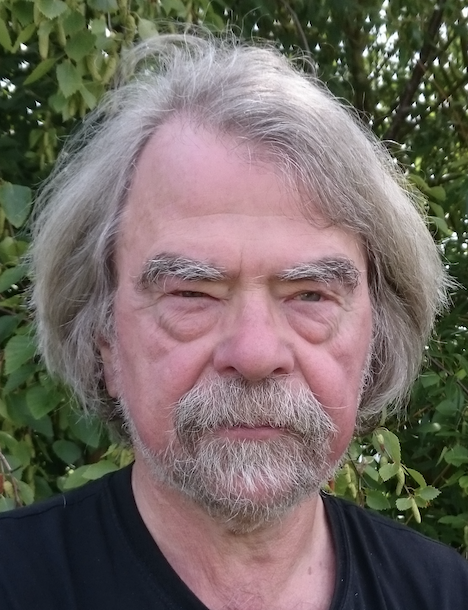The MW Debate Continues
—in Norwegian
Forty Years Later, Not Much Has Changed
A Challenge to ICNIRP
Close to 40 years after its first publication, The Microwave Debate, Nicholas Steneck’s history of research and regulation of microwave health effects, is back in print —this time in Norwegian.
The new translation comes with an epilogue by Thomas Butler, a professor at Ireland’s Cork University Business School, who has contributed seven chapters —about 30,000 words— to bring Steneck’s history up to the present.
The centerpiece of Steneck’s story is how the microwave exposure limit, known as the 10 milliwatt or Schwan standard, came about in the mid-1950s and continued to hold sway for decades. A four-member team, led by Steneck, published “The Origins of the U.S. Safety Standards for Microwave Radiation” in Science magazine in 1980.
Butler continues this thread with a focus on how the standard evolved after 1984, and the parts played by ICNIRP, the IEEE and the FCC.
The translation is the brainchild of Einar Flydal, formerly with Telenor, a telecom conglomerate serving the Nordic and many other countries. He has also been a consultant to the Norwegian Ministry of Education and an adjunct professor at the Norwegian University of Science & Technology (NTNU). After retiring in 2011, Flydal turned to speaking and blogging on EMF/RF health issues, including dirty electricity, smart meters, and most recently 5G. He lives in Oslo.


The Norwegian (2022) and the original U.S. (1984) editions
Asked why he had undertaken the translation, Flydal explained that as he was digging into EMF history he became fascinated by the work of Robert Becker and Andrew Marino, two biophysicists who, separately and together, wrote a number of books. Becker’s The Body Electric, which came out in 1985, a year after Steneck’s Debate, is considered a classic. It’s still in print.
Along the way, Flydal spotted a reference to The Microwave Debate and how it offered details on the origin of the U.S. exposure limit. Last year, he located a copy in a second-hand bookstore in San Diego. “I quickly realized that while it may be out of print, it’s not out of date,” Flydal told me. “I then spent most of the winter translating.” He also reached out to Butler, who, like himself, is highly critical of ICNIRP: Butler has described the Commission as carrying the torch “to protect the thermal view.”
Flydal said that the translation was worth the effort. The potential audience is larger than one might assume, he explained. “All Scandinavians can read Norwegian —although Swedes and Danes find it a bit odd. Icelanders can too.” (The total population of these four countries is over 22 million.)


Tom Butler Einar Flydal
Unlike Steneck, who presents a largely neutral description of microwave history, Butler is an advocate for change. He sees what has transpired over the last 40 years as ample grounds for a new approach, one that does not include ICNIRP.
ICNIRP: “An Immoral Group”
“In my opinion,” Butler stated in an email from Cork, “ICNIRP is an immoral group of scientists who knowingly distort scientific truth to protect industry interests over the public good.” He added: “Given the weight of evidence on oxidative stress, and the ubiquity of wireless devices in homes, we may be looking at an increase in chronic and systemic illnesses.” Butler describes himself as a social scientist and technologist.
Flydal’s new book has received an improbable endorsement from Lars Klæboe of the Norwegian Radiation Protection Authority. He calls it a “formidable effort.” This blurb on the back cover is surprising in the ever-polarized world of RF and health. Klæboe, a member of the original Interphone study group, is skeptical of RF health risks. He has long worked with Maria Feychting, a former vice chair of ICNIRP, and Joachim Schüz of IARC, two other skeptics.
Butler is planning a “much slimmed down” version of his epilogue, some 8,000 words, for publication in an English-language journal.
Neither Butler nor Flydal is a stranger to the political machinations of the RF world —and of course there’s a lot about that in Steneck’s book.
A couple of years ago, Butler filed a complaint against the Irish Times after the newspaper reprinted an article from the New York Times: “The 5G Health Hazard That Isn’t,” by William Broad. Butler charged that Broad had distorted the facts and the Irish Press Ombudsman agreed. The NY Times shrugged it off. (More on Broad’s distortions here: “A Fact Free Hit on a 5G Critic.”)
Flydal recently published —with Else Nordhagen— an analysis showing that ICNIRP’s 2020 RF/MW exposure limits are based on scientific reviews by a small clique, most of whose members have close ties to ICNIRP itself (they call this “self-referencing authorships”). Nordhagen and Flydal detail how Their paper was posted by Reviews on Environmental Health on June 27.
Steneck was a history professor at the University of Michigan in Ann Arbor when the Microwave Debate was published in 1984. After becoming emeritus, he became a consultant in the field of scientific integrity.
I asked Steneck for some thoughts about where the Debate stands today. Here’s part of what he told me:
“In the book, I showed that science was influenced by values and politics, but that message was not accepted. So now, 40 years later, we are still relying on ‘science’ to make decisions, not realizing or admitting that the RF field is plagued by the same problems that existed in the 1980s. When contacted about the translation, I was pleased to know that some understood and appreciated what drives and shapes the research we use to set policies. I am not optimistic that this new translation and update will make much of a difference. Today’s social media generation will not tolerate any limitation of 5G.”
_______________________
Debatten on Mikrobølgene is available online and in local bookstores with a list price of 460 NOK (US$45), though Flydal says it can usually be had for 410 NOK ($40).
